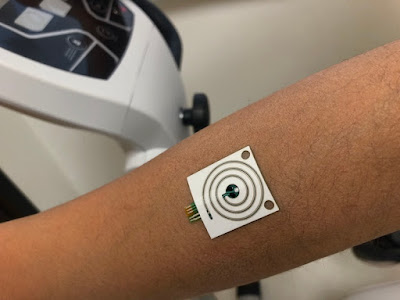Topics: Biophysics, Biotechnology, Microfluidics, Nanotechnology, Research
A new scalable, high-throughput fabrication process that makes use of roll-to-roll printing and laser cutting can produce wearable sweat sensors rapidly and reliably and on a large scale. The devices, which can almost instantly detect and analyse electrolytes, metabolites and other biomolecules contained in sweat, could be employed in real-world applications and not just as laboratory prototypes.
Analyzing sweat is a non-invasive way to monitor a range of biomolecules, from small electrolytes to metabolites and hormones and larger proteins that come from deeper in the body. Indeed, sweat sensing has already been used to medically diagnose diseases like cystic fibrosis and autonomic neuropathy and to assess fluid and electrolyte balance in endurance athletes.
Traditional sweat sensors collect sweat from the body at different times and then analyse it. This means that the devices can’t be used to detect real-time changes in sweat composition – during physical activity, for example, or to monitor glucose levels in diabetic patients. Wearable sensors, which make use of flexible and hybrid electronics, overcome this problem by allowing for in-situ sweat measurements with real-time feedback. However, it is still difficult to reliably make sweat sensor components (including microfluidic chip and sensing electrodes) in large quantities and with good reproducibility.
Wearable patches could ‘decode’ sweat, Belle Dumé, Physics World

Comments